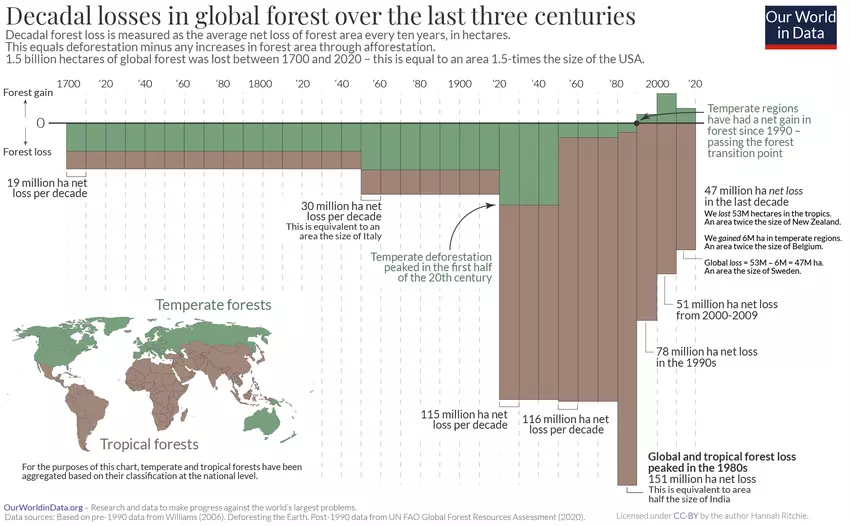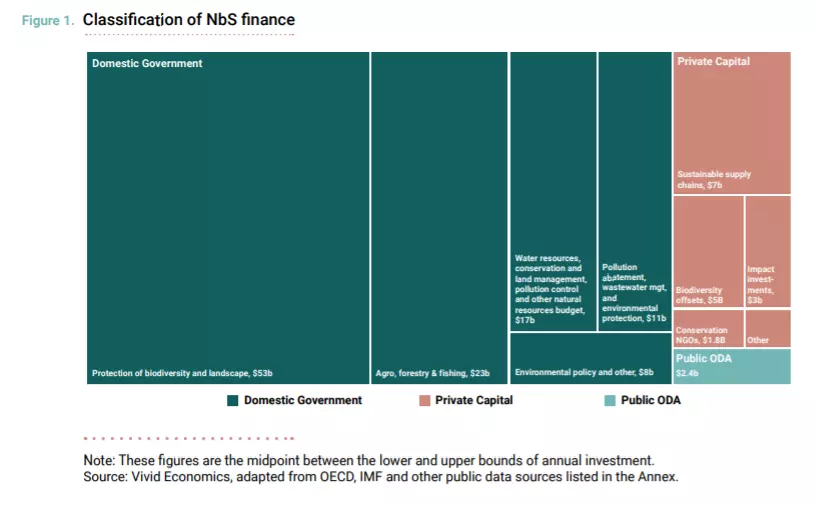· 4 min read
- Nature-based solutions are actions and policies that protect, manage and restore natural ecosystems, while addressing societal challenges.
- These solutions are recognized as an effective way of combating issues such as climate change and deforestation.
- Investment by G20 economies in nature-based solutions needs to double by mid-century to help prevent an environmental crisis.
Nature is a powerful tool in the fight against threats like climate change and biodiversity loss, but more must be done to fully utilize its potential – and we need to act quickly.
Not only are trees, plants and healthy soil an abundant and cost-effective means of removing and storing carbon dioxide from the atmosphere, they are also home to insects, birds, animals and a world of microscopic organisms that help to underpin human life.
Sustainable agriculture and forestry solutions that harness the power of nature can help protect, preserve and restore natural ecosystems and address some of society's challenges.
But investment to scale up these initiatives needs to increase many times over to help meet climate targets.
Repair, restore and regenerate
So, what are nature-based solutions?
The term refers to actions and policies that use nature’s resources to protect and restore ecosystems, while helping resolve society’s challenges.
It’s an approach to agriculture, forestry and land management that treats nature as a planetary life-support system, preserving woodlands, peat and grasslands, aquatic systems and working lands used to grow crops or rear livestock.
Nature-based solutions aim to reduce greenhouse gas emissions, promote healthy ecosystems and reduce the likelihood of flooding, soil erosion, drought and other extremes of the climate crisis.
“A fast overhaul of the entire food and agriculture systems is needed to shift market dynamics from driving soil and forest degradation towards starting to repair, restore and regenerate nature and communities,” says Rainforest Alliance CEO Santiago Gowland.
Gowland points to solutions such as regenerative farming – which improves rather than depletes natural resources like soil – and sustainable forestry, where timber is harvested without devastating large areas of tree canopy.
Other examples include Scotland’s plan to plant shade-giving trees along the banks of remote rivers to help cool the waters where salmon spawn – waters that are becoming inhospitably hot due to climate change.
Preserving ecosystems
Deforestation alone has removed 1.5 billion hectares of forest in the past 300 years or so – an area roughly one and a half times the size of the US.

Deforestation reached its peak in the 1980s, with records showing a 150 million hectare net loss during that decade as vast tracts of the Brazilian Amazon were cleared to graze livestock. This compares to canopy loss of 19 million hectares each decade between 1700 and 1850.
Rates have fallen since the 1980s, and some regions have begun to regrow more forests than they lose – as shown in green on the chart above.
Financing a nature-based future
Preventing deforestation and other unsustainable farming and forestry practices requires investment in environmentally focused solutions – and lots of it.
Funding from the G20 – consisting of the EU and 19 of the world’s largest economies – accounts for 92% of global investments in nature-based solutions, but is mostly spent on domestic initiatives.

The group invests $120 billion each year on nature-based solutions, assets and activities, but this needs to more than double to $285 billion by 2050 to avert a nature, climate and land degradation crisis, according to the State of Finance for Nature in the G20 report, released in January 2022.
This joint analysis by the UN Environment Programme, the World Economic Forum and the Economics of Land Degradation Initiative looks at how wealthy nations can promote sustainable farming and supply chains, and increase protection for oceans, forests and other natural spaces to limit global warming.
"The amount of money being invested in nature-based solutions is not nearly enough," the report’s co-author Ivo Mulder told the Thomson Reuters Foundation. "I would hope that G20 countries can lead by example and they're not doing that at the moment."
The report’s authors call on governments and private investors in G20 countries to substantially increase their international investments in initiatives that put nature at the heart of efforts to build back better after the pandemic. Climate and nature-related financial risks should also be fully disclosed by companies and financial institutions, they say.
This article is also published by the World Economic Forum. Energy Voices is a democratic space presenting the thoughts and opinions of leading Energy & Sustainability writers, their opinions do not necessarily represent those of illuminem.






